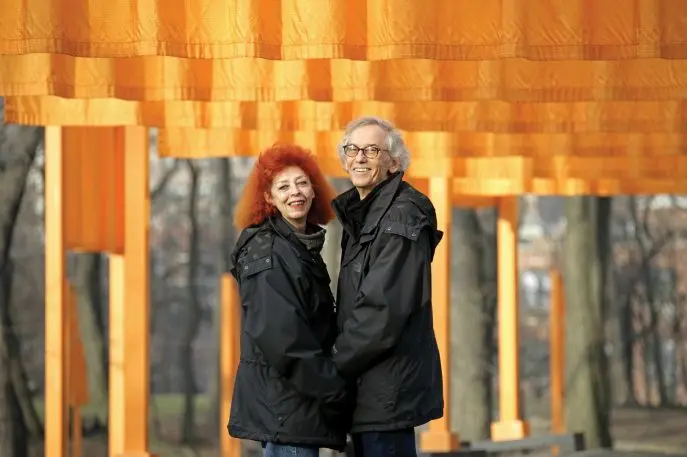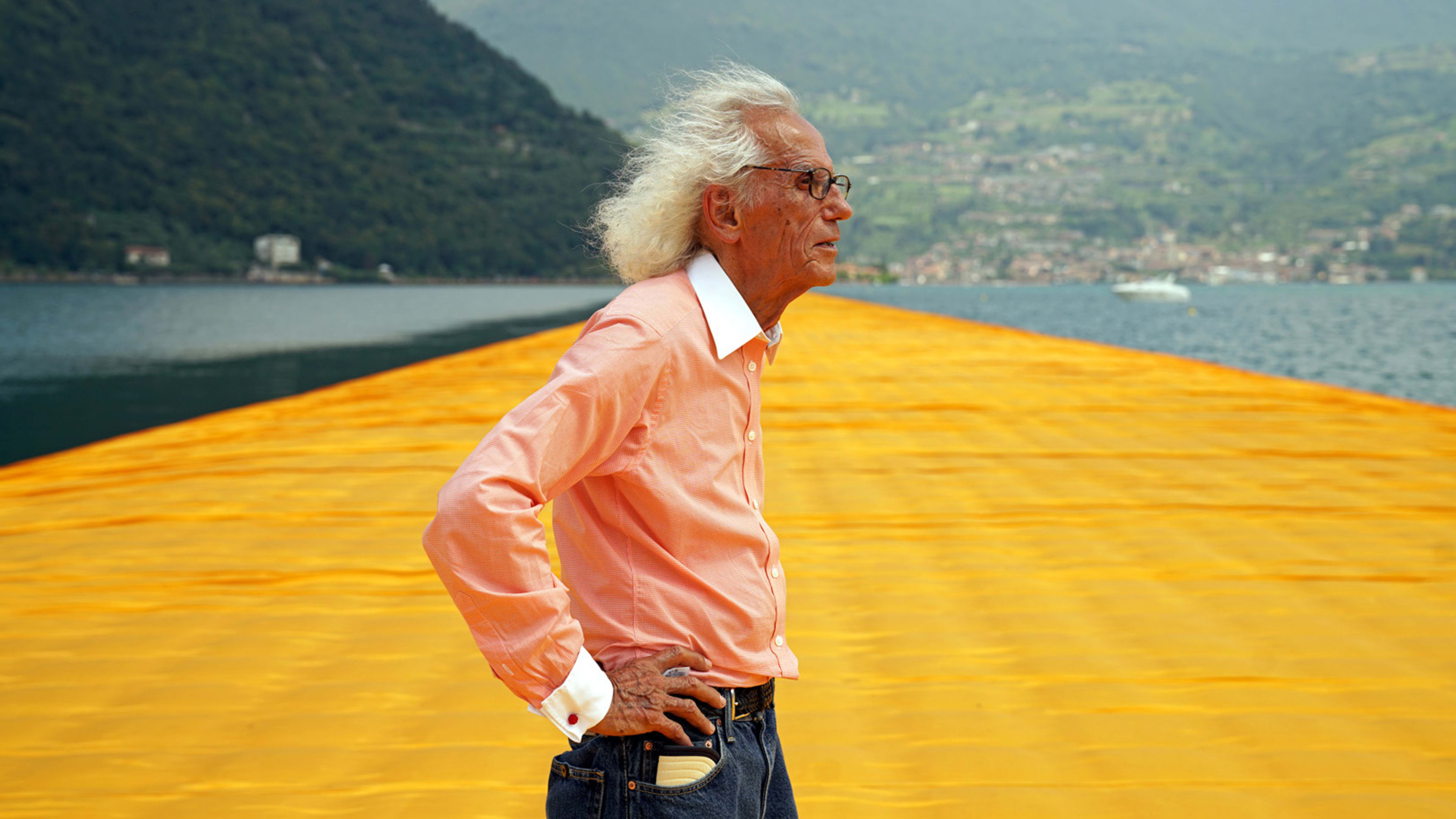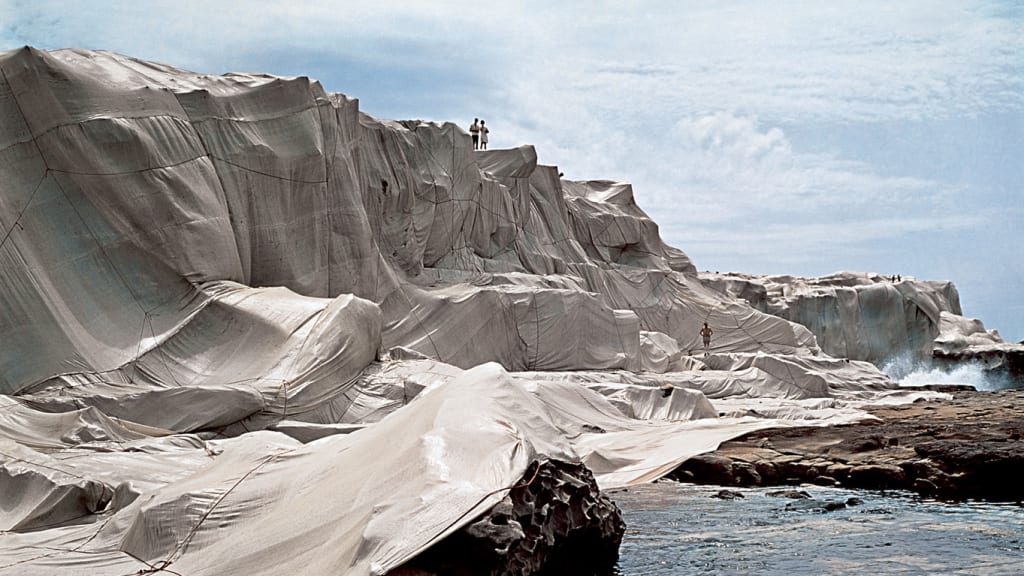Christo, the conceptual artist famous for his massive, ephemeral installations around the world, died Sunday of natural causes in New York City. He was 84.
Christo and his wife and artistic partner, Jeanne-Claude, used both natural and manmade monuments as their canvas, wrapping existing structures in fabric to give them new life on a massive scale. Christo and Jeanne-Claude wrapped up famous monuments such as Paris’s Pont Neuf in 1985, the Museum of Contemporary Art Chicago in 1988, and Berlin’s Reichstag building in 1995.


While the works were sometimes decades in the making, they were only on view for a short time. The Pont Neuf and Reichstag installations stayed up for just two weeks. Meanwhile, Christo had been looking to create a floating Mastaba—a massive, pyramid-like structure made of stacked barrels—since the 1960s, according to his website. The London Mastaba was finally installed in London’s Hyde Park for three months in 2018.
The pair also worked with natural landscapes and public spaces. In 1972, they installed the Valley Curtain, a massive piece of orange fabric that was hung between two Colorado mountains. A site-specific installation, The Gates, was installed in New York City’s Central Park in 2005, dotting walkways with 7,503 pieces of saffron fabric to create the effect of “a golden river appearing and disappearing through the bare branches of the trees.”
Not all of the duo’s public works were well received, however. Christo abandoned Over the River, a project that would have suspended fabric panels over the Arkansas River, in 2017 after decades of planning due to objections from environmentalists, including the Sierra Club.

Christo, who was born Christo Vladimirov Javacheff but used only his first name, was born in Bulgaria on June 13, 1935. He moved to Paris in 1958, where he met his wife, Jeanne-Claude, before moving to New York City, where he lived for 56 years. The pair self-financed their art through the sale of Christo’s preparatory studies and early works from the ’50s and ’60s, and they refused grants, sponsorships, or volunteer labor in order to maintain creative freedom.
“The artists temporarily use one part of the environment. In doing so, we see and perceive the whole environment with new eyes and a new consciousness,” Christo’s website says. “The effect lasts longer than the actual work of art.” And in Christo’s case, the artwork will continue even after his death: The installation L’Arc de Triomphe, Wrapped in Paris will be installed as scheduled in 2021.
Recognize your brand’s excellence by applying to this year’s Brands That Matter Awards before the early-rate deadline, May 3.










